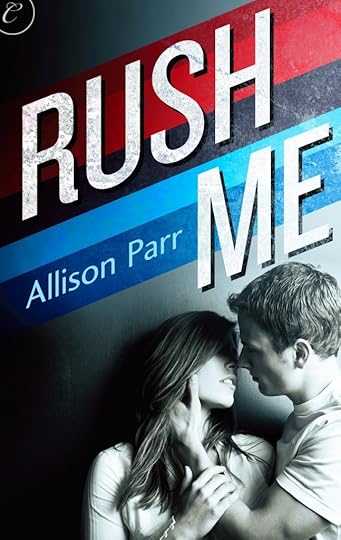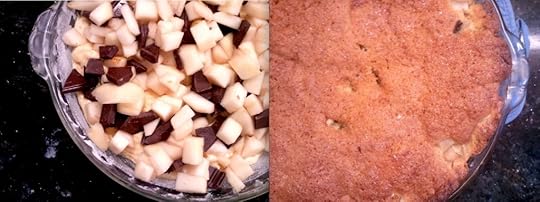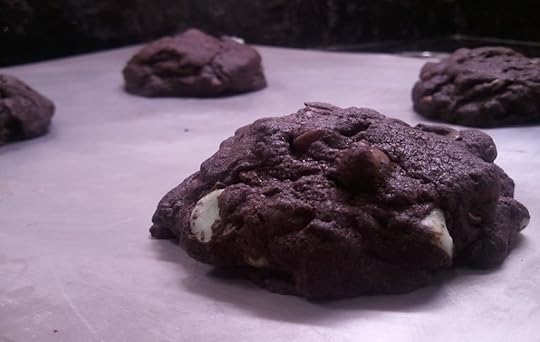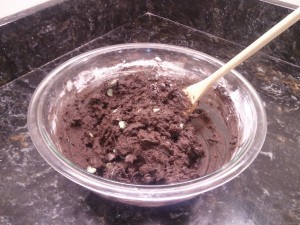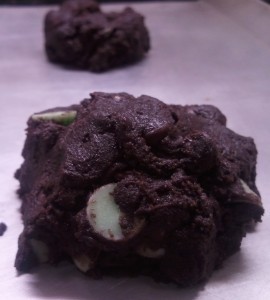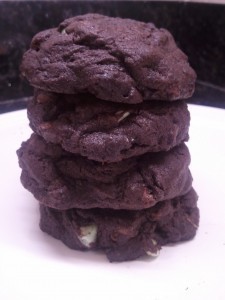Allison Parr's Blog, page 2
January 29, 2013
Cover Reveal
GUYS. I have an announcement! I’m so excited!
So I have been sitting on my cover for approximately FOREVER (I count in dog years) and I finally get to share it with you. This morning, my cover was revealed over at RT Book Review, and now I’m sharing it here.
There’s a whole long process to designing covers, most of which has nothing to do with me. I pick the title (which was an adventure in and of itself) and I provide the synopsis and character descriptions, but mostly I just sit back and wait.
And then, one day months after I sent in my Cover Art Fact Sheet, I got an email. With an image.
ARE YOU READY?
I am so, so happy with how this cover came out. New Adult wasn’t even a thing when Carina acquired my manuscript, so I wasn’t sure what direction they would take the cover in. Pastels? A guy in a football uniform? I had no idea. So I held my breath while the image downloaded, and let out an incredibly relieved sigh and then did a happy dance when I loved it.
Covers are incredibly important. That whole don’t judge a book by it’s cover? GUESS WHAT. People do. There are Goodreads lists devoted to covers with the most beautiful ball gowns or models; Tumblrs devoted to wretched covers; websites devoted to themes on young adult covers.
Actually, that last one is really fascinating. You should check it out. And what IS with Madame Guillotine attacking covers these days? It’s kind of like how parents get written out of YA books. Though not in New Adult books. Oh, no. The parents are there in full force.
(You might be sitting there and being like, hey, Allison. I have no idea what New Adult covers usually look like. Don’t worry! The Goodreads New Adult Contemporary list has you covered.
Interesting, right? Lots of blues & blacks and blacks & whites. Makes me want to write up an anthropology paper on covers, but I won’t, because I have Book 2 due soon).
While a bad cover wouldn’t make me ignore a book, a good cover can make me pick it up and check out the back copy. Covers also work as fly by identifiers: readers can often tell the genre, targeted age, and sometimes even protagonist and place without ever picking the books up.
New Adult covers have a very definite feel to them: dark, sleek, edgy (like my life). Romantic, because they’re usually romance novels. And without much of a background, because people often see these covers for the first time while browsing online, and that means potential buyers only see a thumbnail image. At such a small size, it’s easy for the detail on a larger cover to get lost, or worse, to turn the cover into a muddled mess.
But look how beauteous my thumbnail image is! The title pops, the couple is clear, and look how nice the colors are against that black and white. I’m very, very happy, and I hope you like it, too.
January 28, 2013
Bittersweet Chocolate and Pear Cake
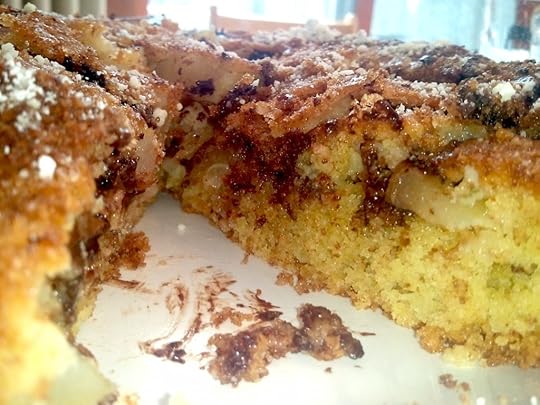
Bittersweet Pear and Chocolate Cake
When I lived in Paris, there was a boulangerie two and a half blocks away from me, which I rarely got to, because I lived right on top of another boulangerie (Life was hard. If it helps, my room smelled like dead mice the day I moved in).
But my bakery (I liked to think of it as mine, even though the women who worked there never gave any sign they’d seen me before, even though I stopped by every other day for a year) closed on Tuesdays. So every Tuesday, if I needed half a baguette or a pain au chocolat, I’d have to head elsewhere. There were two I’d stop by; either Pain d’Epis on Avenue Bosquet, which was the best bet if I needed to go south-east, towards the Latin Quarter and class, or Jean Millet, if I felt like heading up to Seine and walking towards a friend’s place.
And at Jean Millet, there was a chocolate and pear cake which was pretty much the best thing ever. Cubes of sweet, subtle pear baked into spongy chocolate (and I know spongy doesn’t sound good, but trust me here).
Recently, I was trying to think of a good, exciting cake to make. Not a chocolate overload, which is my usual style, but something I’d be willing to share with other people. And something that might look pretty at the same time. So I went over to Smitten Kitchen, because I basically love/trust everything from over there.
While I’m not sure if the pretty part happened, as I was impatient – per usual – and took the cake out before it was fully ready, it was definitely good enough I almost decided not to share.
Bittersweet Chocolate and Pear Cake
1 cup all-purpose flour
1 tablespoon baking powder
1/4 teaspoon salt
3 eggs, at room-temperature
4 ounces (1 stick) unsalted butter
3/4 cup sugar
3 pears, peeled, in a small dice (I used anjou, but would recommend a softer variety, like a bosc or any other of your favorites)
3/4 cup bittersweet chocolate chunks
Preheat the oven to 350°F. Butter a 9-inch springform pan and dust with breadcrumbs, set aside.
Sift the flour, baking powder and salt together, set aside.
Using a mixer fitted with the whisk attachment, whip the eggs on high speed until pale and very thick. (In a professional Kitchen Aid, it takes at least five minutes; on a home machine, it will take nine minutes to get sufficient volume)
While the eggs are whipping, brown the butter. Melt the butter in a medium saucepan (because it will foam a lot) and cook it until the butter browns and smells nutty (about 6 to 8 minutes). It helps to frequently scrape the solids off the bottom of the pan in the last couple minutes to ensure even browning. Remove from the flame but keep in a warm spot.
Add the sugar to the eggs and whip a few minutes more.
Just as the egg-sugar mixture is starting to loose volume, turn the mixture down to stir, and add the flour mixture and brown butter. Add one third of the flour mixture, then half of the butter, a third of the flour, the remaining butter, and the rest of flour. Whisk until just barely combined — no more than a minute from when the flour is first added — and then use a spatula to gently fold the batter until the ingredients are combined. It is very important not to over-whisk or fold the batter or it will lose volume.
Pour into prepared pan. Sprinkle the pear and chocolate chunks over the top, and bake until the cake is golden brown and springs back to the touch, about 40 to 50 minutes or a tester comes out clean.
I was very doubtful when I stuck this in an oven that the batter would somehow, miraculously, spring up and cover all the pear and chocolate pieces. It didn’t look like there was any room for that, not to mention I’d just stuck it in a pie tin instead of a proper cake one. But the cake did just that.
So then I flipped it over.
And then I ate it.
January 19, 2013
Begin at the Beginning

“Begin at the beginning,” the King said very gravely, “and go on till you come to the end: then stop.”
My sophomore year of college, I read a Mona Simpson short story while sorting carbonized hearth remains from a thousand years ago. My eyes needed a break from my archaeological lab work (maize carbon starts to look just like dirt after awhile). The story was assigned by my Fiction II professor, who I, in the manner of art students everywhere, first despised for imposing rules, and then adored for imparting craft.
Simpson’s “Lawns” is about a young woman who works at the mailroom at her college. The opening line is “I steal”, and it’s brilliant. It introduces the protagonist and the overt tension. It draws the reader in and through the story: why does the protagonist steal? Why is she angry? It’s soon clear that this theme is tangled with the underlying issue of sexual abuse. This is what openings are supposed to do: introduce the readers to the tensions and the players of the story, and keep them reading.
Some first lines are so brilliantly crafted they stick in popular culture for years. “Call me Ishmael,” Melville’s protagonist invokes. “It is a truth universally acknowledged,” Jane Austen writes, to be quoted and misquoted for the next two hundred years and counting. These lines catch the attention of the reader; they are compelling, as are the lines that follow them. My own favorite first line comes from Hemingway’s A Moveable Feast. “Then there was the bad weather.” There we are, immediately in the scene. It is smelly and crowded and raining, and people are drunk in one of the millions of cafes on rue Mouffetard.
Years later, the same professor had us read Ian McEwan’s On Chesil Beach. (“They were young, educated, and both virgins on this, their wedding night, and they lived in a time when a conversation about difficulties was plainly impossible”). The professor told us that you should be able to finish a book, go back to beginning, and see all the threads of the novel laid out in the first few paragraphs. That’s some of the best writing advice I ever received. It’s sort of the grown up version of the five-paragraph essay, where each line of the introductory paragraph should indicated one of the following points.
It’s always been important to have good beginnings, but with the incredible amount of books now available, it’s even more crucial for authors to distinguish themselves with a strong beginning – especially for debut authors. Established writers have more trust from their readers, while debuts need to sell the book on the strength of their words alone. And they need to sell the book to agents and editors in the first place. To do so, they’ll often submit a query letter of about 250 words, and the first ten pages of their manuscript. If the agent is hooked, they’ll request more. If not – on the basis of maybe 5% of the total manuscript – a rejection is sent out.
I briefly interned at a literary agency, and it didn’t even take those full ten pages to decide whether we would request more. Part of the decision is subjective interest in the material and voice – so much of any art is subjective. But one very common reason that the first pages would be rejected was a lack of tightness. The pages would meander, describing a normal day without change, or they’d spend too much time on description, or linger on backstory.
Common writing advice suggests beginning with conflict, especially the conflict that changes the protagonist’s life forever. At my internship, I saw a large amount of manuscripts about women that started with her being sexually assaulted. Well, that’s high conflict, through another issue altogether. Many of the novels featuring male protagonists started with high stress interviews. In whatever case, it makes sense to begin where the character’s life alters, and when all the threads and tensions, external and internal, come into play and start to press on each other.
Out of curiosity and because anthropology is awesome, I thought I’d check out the first lines of the current bestselling books, and the most critically acclaimed novels of the past few years. Obviously both groups are doing something right; one batch is striking a cord in thousands of readers, while the other is gaining the laurels of the literary world.
Here are the first lines from the top ten novels of this week’s NYT Combined Print and eBook Fiction list:
As Katie would her way among the tables, a breeze from the Atlantic rippled through her hair.
Safe Haven by Nicholas Sparks
I stand up and look down at the bed, holding my breath in fear of the sounds that are escalating from deep within my throat.
Hopeless by Colleen Hoover
When I think of my wife, I always think of her head.
Gone Girl by Gillian Flynn
Life is full of luck, like getting dealt a good hand, or simply by being in the right place at the right time.
The Coincidence of Callie and Kayden by Jessica Sorensen
I scowl with frustration at myself in the mirror.
Fifty Shades of Grey by E.L. James
He’s come back.
Fifty Shades Darker by E.L. James
Mommy! Mommy! Mommy is asleep on the floor.
Fifty Shades Freed by E.L. James
He had the look of a man who was afraid that tonight would be his last on earth.
The Forgotten by David Baldacci
I am a lawyer, and I am in prison.
The Racketeer by John Grisham
It was that season in my life, the coming of age of the woman inside me who longed to know the secrets of the universe – those potent with lust and desire – the very thing that harnesses a sexual frenzy and drove humanity along on its erotic trembling wings.
Someone to Love by Addison Moore
A little background on these titles – three are self-published New Adult novels (Hopeless, The Coincidence of Callie and Kayden, Someone to Love). Three more are Fifty Shades, which are similar in that not much changed from its self-published fanfic form, and thet also deal with a college girl, and are also written in first person. Interestingly, five of the above begin with prologues (the first Fifty Shadesis the exception). The remaining four titles are one romance by an established, prolific writer (Safe Haven); two thrillers by established and prolific writers (The Forgotten; The Racketeer); and a critically acclaimed novel that could also be categorized as a thriller (Gone Girl).
Now a handful of 2011 and 2012 awards:
Small trees had attacked my parents’ house at the foundation.
The Round House by Louise Erdrich, 2012 National Book Award
China’s turned on herself.
Salvage the Bones by Jesmyn Warn, 2012 National Book Award
His children are falling from the sky.
Bring up the Bodies by Hilary Mantel, 2012 Man Booker Prize
I remember, in no particular order:
The Sense of an Ending by Julian Barnes, 2011 Man Booker Prize
It began the usual way, in the bathroom of the Lassimo Hotel.
A Visit from the Good Squad by Jennifer Egan, 2011 Pulitzer for Fiction
If you’re interested in more critically acclaimed first lines, you can check out the internet, which Has Opinions.
(Look for one written in the last ten years!) (Don’t. The closest is 2002’s Middlesex by Jeffrey Eugenides).
Critically acclaimed novels aren’t, of course, always popular. An article from earlier this week, titled “National Book Awards to Diversify Judging Pool” points out that winning the National Book Award doesn’t really affect sales (unlike the British Man Booker Prize, which can bumps sales dramatically). In fact, the article’s own first line reads: “Looking to broaden its appeal to the public and increase its impact on sales [The National Book Foundation] announced Tuesday that it would increase the number of finalists and diversify the judging pool.”
I find some first lines fantastic; some blasé; some merely an intro to a wonderful tale. While first lines are important, they aren’t going to make or break the novel alone. Still, they’re the first introduction of your work, your story, and your voice. I rarely put books down after one line, but I have after one page. I spent four years working in a bookstore, watching customers crack that spine, read for one minute, and then shelve it or kept it based on that and the cover copy. (And probably the cover). My grandmother told me she would open a book to the middle, read a paragraph, and if she liked it, take it.
(Personally, I based all my own teen-year purchases off whether a love interest was mentioned on the back cover, the first five pages, and whether everyone was alive in the last two. This really stunted my reading of books based on actual historical people. No matter how cool, because reading about a great love match and then realizes the woman died at 49 was depressing to my sixteen year old self. Also, have you heard about Abelard?)
Now, I usually give a book the ten percent that I can download free to my eReader. If I’m dying to find out what happens next, I click buy. Otherwise, I read more free samples. (It also depends how broke I’m feeling at any given moment). In any case, writers should be aware of how long they have to hook readers. One sentence? One page?
I’ve often thought that short stories are like poetry – the writer must be economical in her word choice, using each word with intention, whereas a novelist has more flexibility. Even so, that flexibility isn’t for the beginning. In the beginning, each sentence should as be as tightly crafted as a poem.
One caveat there, of course: One complaint I’ve heard repeated from angry readers is that they fall in love with a story turning the tightly woven first half, and then everything goes to hell. Don’t do that, guys.
Unless you’re Dante.
January 11, 2013
Decadent Chocolate Pudding

Guys, I keep trying to make ice-cream. I got this awesome ice cream maker for Christmas and was all YES! No longer must I live an ice creamed deprived existence! (I mean, not really, because there is a place in my freezer specifically reserved for Ben & Jerry’s. But still).
But then things kept happening.. Like I didn’t freeze the container. Or I didn’t have the ingrediants. Or I wanted chocolate NOW, not in several hours.
Which means I still haven’t made ice cream. Instead, I went with what those who don’t know better might call poor man’s ice-cream: pudding.
But that’s only because they haven’t had the joy of tasting this recipe, which is so good and so easy. I found this on one of my favorite food blogs ever about two years ago, and tried it on the strength of her recommendations and photos, since I’d never been a pudding person before. I’d been scared off puddings when I couldn’t check the ingrediants, in case that that monster-under-the-bed of vegetarianism lurked inside: gelatin. So no casual pudding for me.
Luckily, this one is basically chocolate and milk. And sugar. And cornstarch. And so, so delicious.
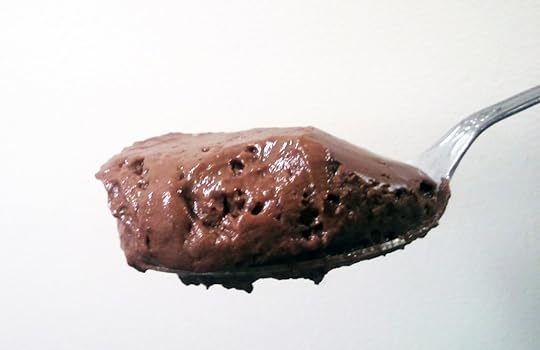
Silky Chocolate Pudding
From Smitten Kitchen, adapted from John Scharffenberger, via Wednesday Chef
Serves 6
1/4 cup cornstarch
1/2 cup sugar
1/8 teaspoon salt
3 cups whole milk
6 ounces 62% semisweet chocolate, coarsely chopped (I sometimes throw in more chocolate. Or a tablespoon of cocoa. Depends how much chocolate I need at the moment)
1 teaspoon pure vanilla extract
1. Combine the cornstarch, sugar and salt in the top of a double boiler. Slowly whisk in the milk, scraping the bottom and sides with a heatproof spatula to incorporate the dry ingredients. Place over gently simmering water and stir occasionally, scraping the bottom and sides. Use a whisk as necessary should lumps begin to form. After 15 to 20 minutes, when the mixture begins to thicken and coats the back of the spoon, add the chocolate. Continue stirring for about 2 to 4 minutes, or until the pudding is smooth and thickened. Remove from the heat and stir in the vanilla.
2. Strain through a fine-mesh strainer (Deb from Smitten Kitchen skips this step. So I do. Straining is for organized people) into a serving bowl or into a large measuring cup with a spout and pour into individual serving dishes.
3. If you like pudding skin, pull plastic wrap over the top of the serving dish(es) before refrigerating. If you dislike pudding skin, place plastic wrap on top of the pudding and smooth it gently against the surface before refrigerating. Refrigerate for at least 30 minutes and up to 3 days. (Eating it warm is obviously totally wrong, unless it’s really cold and and you’re really impatient, in which case it’s perfectly logical).
January 9, 2013
Twenty-something heroines
How I feel when I’m reading a really good book, and then the twenty-two year old protagonist is described as effortlessly charming, likeable and poised:
[image error]
And she has perfect hair, is a master at her craft, and guys get flustered just looking at her:

I mean, that’s exactly what my life was like at twenty-two. Obviously. Yes.
January 3, 2013
10 New Year Resolutions
1) Figure out this whole Twitter thing. Pretend I’m not the last social media inept 24 year old out there. Gifs too. Stop telling people about how gif was America’s Word of the Year while England had omnishambles. They already learned about it on their Twitter feed*
2) Read more book equivalents of leafy green vegetables
3) Perfect sixty-second explanation of New Adult/digital-first publishing, modified for friends, parents’ friends, and bus/airplane seat partners
4) Make these brioche au chocolat. Definitely make these.
5) And use my brand spankin’ new ice cream maker!
6) Also, it would be cool if I went to Ireland this year. For research.
Wait, this rapidly degenerated into a list of things I want, not resolutions to be a better human being
. . .
7) Stop losing buttons/socks
8) Finish Anna Karenina. Because it’s Good Literature. Not because I like reading things before I see the movie. Obvi. Also, finish War and Peace. Or at least get beyond page 200 for once.
9) Go to dentist?
10) Be on time for things!**
*Merriam-Webster went with Malarkey. Shall try to fit malarkey into all future manuscripts
**This is never ever going to happen
December 16, 2012
Double Chocolate and Mint Chip Cookies
So this week I’m working on my edits, which is great, but you know what’s even better? Working on your edits while eating cookies.
Levain Bakery* is a hole-in-the-wall shop on the Upper West Side, which just happened to be right on my way home from work this summer.
Okay. So it was actually forty blocks away.
But if you pass by the place and smell the deep, rich scent of dark chocolate, you’ll understand why I occasionally took a detour. Or why, on weekends, I’d buy Levain cookies and smuggle them into whatever café I was writing out of that day.
Because those cookies? Best thing ever. Chocolatey, buttery, gooey – these are no stale, cocoa-skimping pucks. These are COOKIES.
Also, they’re four dollars.
Guys. I am actually the cookie monster**. But even I don’t want to shell out four bucks a cookie.

Om nom nom
Which is where my best friends come in.
And voila! The internet already had the same idea, and thus my happiness was replenished.
I make these cookies all the time, swapping out the chips for my mood. Today, I want peppermint. During December, I want chocolate and peppermint ALL THE TIME. I make peppermint simple syrup and have homemade mochas each morning. I make peppermint bark. I sprinkle crushed candy canes onto brownies.
Today, I lost the pepper, and just added a bag of mint and dark chocolate chips to the cookie dough. It was an excellent choice. The cookie monster would be proud.***
Giant Double Chocolate Cookies
Yield: 12 very large cookies
Ingredients:
1 cup (2 sticks) cold, unsalted butter, cubed
1¼ cup sugar
2 large eggs
½ cup dark cocoa powder
2¼ cups all-purpose flour
¼ tsp. coarse salt
1 tsp. baking powder
2½ cups semi-sweet chocolate chips (or white chocolate chips, mint chips, any chip ever!****)
Directions:
Preheat the oven to 350˚ F. Line baking sheets with parchment paper or silicone baking mats. In the bowl of an electric mixer, combine the butter and sugar. Beat together on medium-high speed until light and fluffy, 2-3 minutes. Blend in the eggs one at a time, scraping down the bowl as needed. Mix in the cocoa powder until well blended.
Add the flour, salt and baking powder to the bowl and mix on low speed just until incorporated. Fold in the chocolate chips with a spatula.
Transfer the dough to a work surface and knead briefly by hand to be sure the ingredients are well combined.
Divide the dough into 4 ounce portions (or divide into 12 equal pieces). Roll each portion of dough into a ball and flatten just slightly into a disc. Place on the prepared baking sheets, a few inches apart.
Bake 16-20 minutes. Let cool on the baking sheets 5-10 minutes, then transfer to a wire rack to cool completely.
Source: Love From the Oven, via Annie Eats, via My Baking Addiction, via Parsley, Sage, Desserts and Line Drives. It’s big foodie world out there, guys.
*Oh God they have a COOKIE CAM on their site? I’m totally waving at the camera next time I go in.
*Veggie monster will be in the corner eating kale chips and feeling righteous.
**Did you know Cookie Monster’s dad is big on energy conservation, water conservation, and environmentalism?? Me neither. Wikipedia told me. But damn, that’s a bad-ass family.
*** Except for this one. He just wants to be a real boy, not part of your digestive system.
December 13, 2012
All About New Adult
In which I answer all the questions anyone has ever asked me about what I write
I’ve never heard about New Adult fiction before. Where did it come from?
New Adult is a category where the protagonists are usually between eighteen and twenty-four, and the subject material focuses on a coming-of-age and contemporary issues dealt with by that age group. (Google knows all about this – it’s neatly categorized me as an 18-24 year old woman that’s interested in eBooks and travel).
I first heard about it a couple of years ago when I saw a call for manuscript submissions and almost skipped over one category, because I didn’t know what it meant: New Adult.
The term stumped me. I’d been reading Young Adult books since an ad for The Princess Diaries ran in Seventeen a dozen years ago. Now, as a (semi) adult, I still read YA, but I hadn’t heard of New Adult.
So I asked Google.
Today you’ll find a Wikipedia page and a NY Magazine article covering the category, but at the time, there weren’t many answers. I found a pointer to St Martin’s Press, who coined the phrase in 2009 when they hosted a contest asking for “cutting edge fiction with protagonists who are slightly older than YA and can appeal to an adult audience.”
So that’s where the name came from. But it didn’t really work like St. Martin’s hoped – publishers didn’t jump on the New Adult bandwagon in 2009, and for years the term New Adult merely floated around the blogosphere as people said “wouldn’t this be nice” and agents and writer’s groups said “no, and please don’t put that in your query letter because its ridiculous.”
Why weren’t publishers interested in New Adult?
Conventional wisdom in the publishing industry said that college kids and recent grads didn’t read that much, so it didn’t make sense to publish books that appealed specifically to them. While fiction for teens sold very well – well enough that dozens of traditionally adult writers wrote YA books (James Patterson, James Frey, Kathy Reichs) the age group above them was a no-man’s land.
And because publisher’s didn’t want to buy those books, agents didn’t want to take on those projects, so even if writers wrote books dealing with college-aged kids and post-grads, they were often asked to age down or up the characters so that they would appeal to one of the established markets (Case in point: several people, agents and editors alike, suggested I age up the 23-year-old heroine of RUSH ME by five years, so that she attended her ten-year high school reunion instead of her fifth).
So how did New Adult end up becoming an established category?
It largely gained recognition through self-published successes, like Tammara Webber’s Easy, Cora Carmack’s Losing It, and Jamie McGuire’s Beautiful Disaster. After these books – which are all narrated by college aged, first person female protagonists – garnered thousands of positives reviews and sales, they were picked up by major publishers (Berkley/Penguin, Simon and Schuster, and HarperCollins respectively). With their proven successes, the industry became more willing to take on that age group. Now, some agents and editors are actively seeking New Adult. (But we already knew Carina Press is awesome).
But surely people have written about 18-24 year old characters before.
True. They used to largely be represented in chick-lit, which boomed and crashed along with the economy. After that, the young twenty-something women (sorry guys, I’m not really sure where you are. Have you had your Philip Roth phase yet? That should tide you over for twenty books) seemed to move into the urban fantasy genre. Take the bestselling Fever series by Karen Marie Morning, staring a 22 year old, or The Edge series by Ilona Andrews, with similarly aged heroines.
You can actually find TONS of 18-24 year olds in historical romances and category romances. But the difference from New Adult characters and all of those above is that New Adult is far more focused on contemporary characters with realistic, familiar issues, instead of ballrooms and faeries. (And, okay, millionaire quarterbacks might not be that realistic, but it could happen, right? Right?)
But, uh, isn’t that just adult fiction? Why do we need another whole category?
New Adult is written with a different voice and it explores different themes than adult fiction. Just because a book is written about a character of certain age doesn’t mean it’s written for that age group (Extremely Loud and Incredibly Close certainly isn’t targeting nine-year-old readers, nor is The Lovely Bones exclusively for fourteen-year olds). New Adult books are usually more relevant to the issues twenty somethings have (and we have a lot of issues).
In fact, New Adult is often more similar in voice to YA fiction: they’re fast paced, engaging, and written in close third or first. Part of this is due to the readership itself: today’s twenty-something grew up while the YA market boomed. I was ten when Harry Potter came out in the States, and sixteen when Twilight was published. During my teenage years, there were plenty of books about the situations I faced every day. Then we went to college, and graduated – and kept reading YA (Turns out 55% of YA books are bought by adults ). Even though many of us really wanted books about our own age group.
So in a way, New Adult is a natural evolution out of Young Adult. After all, when YA started, way back with Holden Caulfield (ugh, Holden), it didn’t have its own place in the bookstore. But with the growth of the genre – with Harry Potter, and Twilight, and the Hunger Games – you can now find not only a YA section of the bookstore, but also Young Adult Fantasy and Young Adult Paranormal Romance. As the readership aged up and expanded, the genre did, too.
Okay, so what do New Adult books deal with?
(No wonder Plato wrote up those Dialogues. It’s very nice to be asked the questions you most want to answer).
WELL. New Adult deals with all those issues of ours. Parental expectations. Unpaid internships (which have their own issues, as pointed out by Rachael Levy. Paying rent. Moving in with roommates or your partner. There’s a coming of age arc, not dissimilar to that in YA, but happening to an older age group. And there’s romance! Because really, that’s the most fun to write about.
Part of the reason it’s not the same as “regular” adult fiction is because it deals with this extended adolescence we’re dealing with (to my parents infinite delight, no doubt). TV has already jumped on this transitory period, so no surprise literature’s also incorporating it. In fact, my favorite of the new crop is “Girls”, probably because it’s about an unpaid publishing intern who lives with friends in Brooklyn (!!!) just like Rachael in RUSH ME. Also, she goes around being awkward, which is also quite similar to Rachael.
Actually, it’s pretty similar to my life. So no wonder I like these stories.
So who does New Adult appeal to?
Everyone! Especially you, dear reader. And your wallet.
Ahem. Right. Well, it’s been referred to as crossover and transitional fiction, so it really is intended to appeal to adults as well as older teens. Case study: while RUSH ME is very relatable* to twenty somethings (who doesn’t accidentally gatecrash pro-athlete parties and meet gorgeous QBs? I know I do ALL THE TIME), it’s also a romance that will appeal to romance readers, and hopefully funny enough that anyone with a skewed sense of humor will enjoy it. Al
Toni Morrison famously said, “If there’s a book that you want to read, but it hasn’t been written yet, then youmust write it.” I think that’s the real reason New Adult is developing – it’s certainly why I wrote RUSH ME.
* Why didn’t anyone ever tell me the word relatable isn’t real? World shaken. Must go eat comfort chocolate.
September 6, 2012
Here we go!
Well, hey there. Here I am. Blogging. Again.

Coffee at Macy’s
(If you’ve never seen me blog before, let me take a moment to mention that I am a fantastically dedicated blogger, who keeps readers updated on breaking news a second after it happens. I’m like the Michelangelo of blogging).
Otherwise . . . Guys, I mean it. This time I’m SERIOUS about blogging.
And I am, actually, because this time I have much more incentive than chronicling a year abroad or living in Paris or baking chocolate. Because this time, I sold a book.
(Dance break)
A year or so ago, I was in California interning at the awesomist magazine ever, but only three days a week. During the other days, I sat down and decided to write what I knew, which were unpaid publishing interns and New York City and upcoming reunions. The story was remarkably fun to write
And I was thrilled when the cuttingly funny Angela James at Carina Press made an offer for both this book and two more to round out a trilogy.
So, there we go. RUSH ME is set for an April 2013 release. It’s digital first, guys, which means it’s time to break out your Nooks and Kindle and smartphones.


